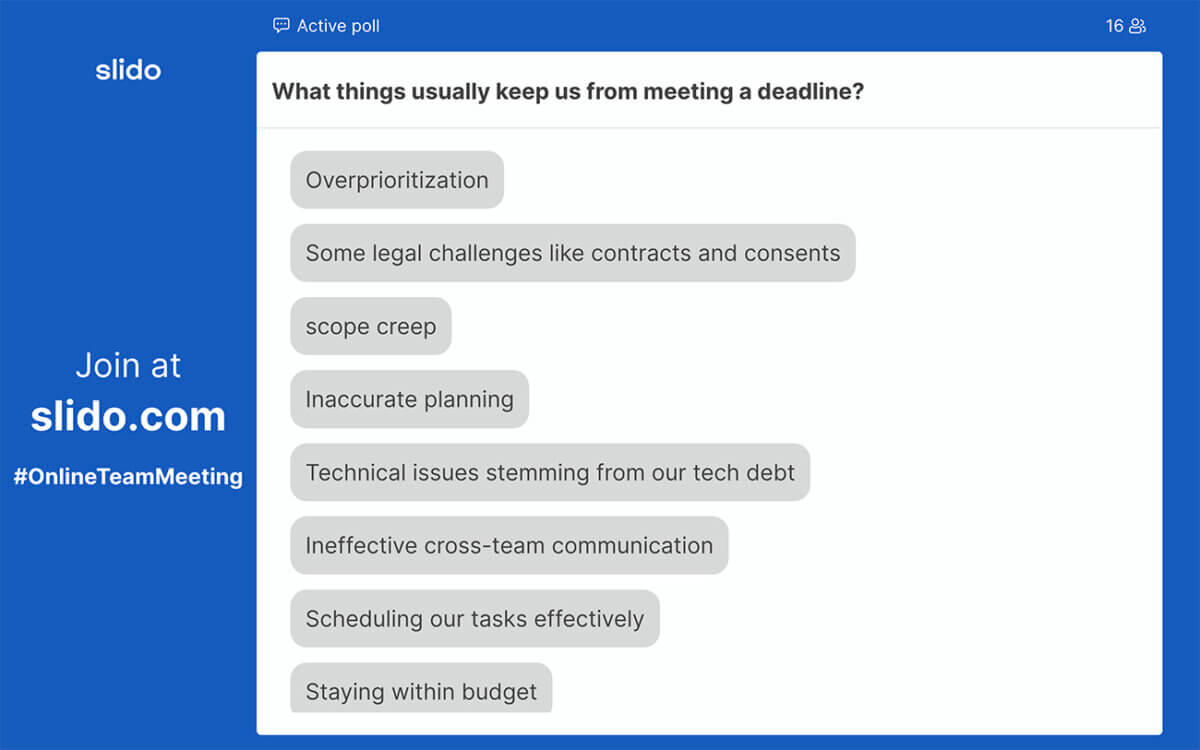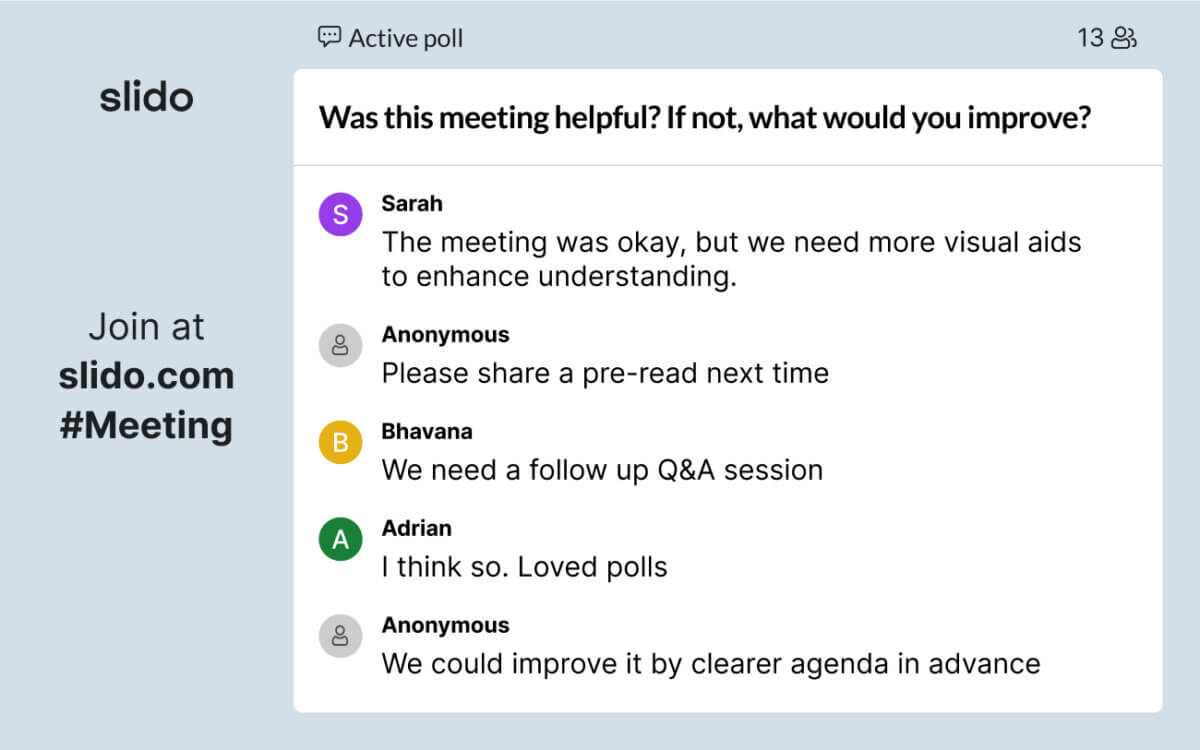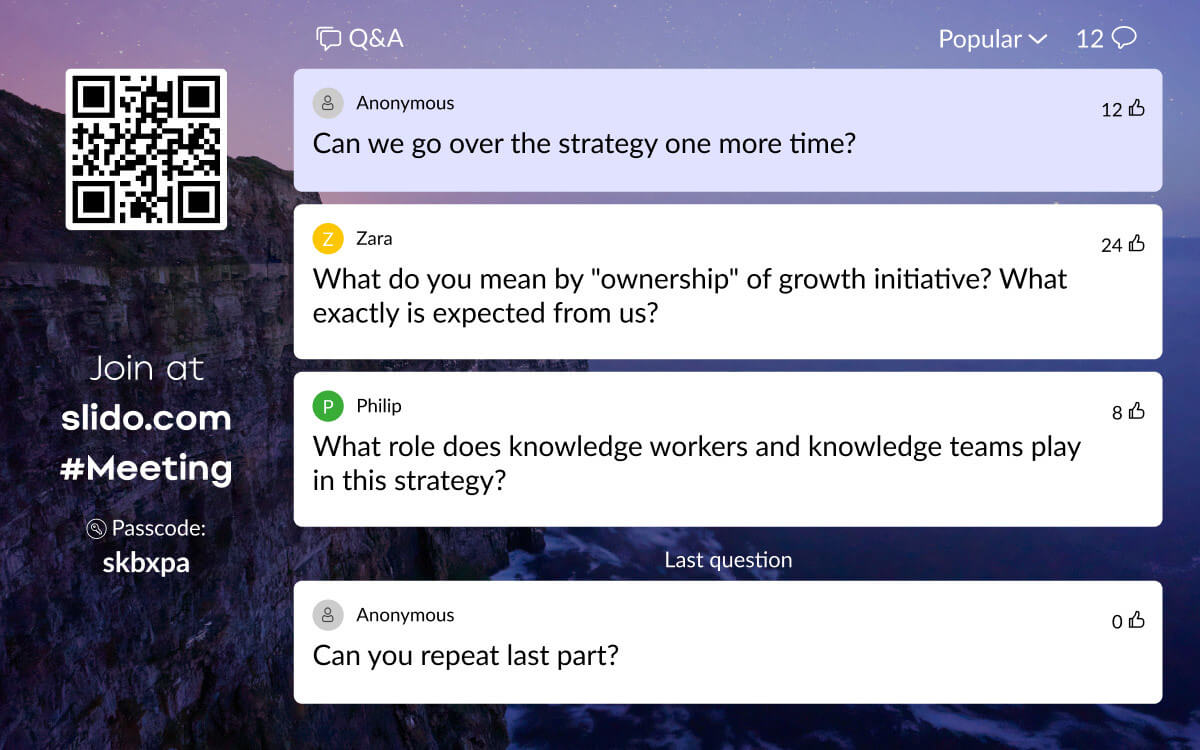Bad meetings and meeting overload are the most obvious signs of a troubled meeting culture.
In April 2023, we spoke to 18 leaders from the US to understand what their meetings were missing**. Surprisingly they did not call for more efficient meetings. They wanted trusted, more inclusive meetings instead.
Leaders tell us that to stop the culture of bad meetings, meeting organizers need to focus on something beyond ‘having an agenda’ or ‘ending on time’. This is where meeting culture comes into play.
In this blog, we’ll explore our research insights further by defining what a meeting culture is and the practical steps you can take to improve yours.
- What is a meeting culture and why should you care about it?
- Signs of a meeting culture in trouble and how to fix them
What is a meeting culture and why should you care about it?
Every meeting is different. A standup call follows a different set of rules than an all-hands meeting.
But, certain unspoken rules define each and every meeting within your company, from exec calls to 1:1s. These unspoken rules constitute your meeting culture. Your organization may have:
- an efficiency-based meeting culture that focuses on timely, short meetings with pre-read materials.
- a meeting culture that mandates active participation.
- an asynchronous meeting culture where every meeting is recorded by default and shared with transcripts.
Or it could be a combination of all of these three.

At Slido, we define meeting culture as a set of practices and behaviors that influence or determine the way people participate, communicate, and collaborate across the organization.
Stretching far beyond meetings themselves, a meeting culture accounts for what happens before, during, and after a meeting. It even decides whether a meeting is needed or not.
In short, your meeting culture decides whether your meeting could’ve been an email.
Read also: What is a great meeting culture and how do you build one?
Signs of a meeting culture in trouble and how to fix them
Having a good meeting culture in place brings alignment across the business. On the other hand, a bad meeting culture can negatively affect employee satisfaction, and business performance, slowing you down in the long run.
So how do we tell a bad meeting culture apart from a good one? Here are some signs to look out for:
#1. Lack of trust
Trust in the workplace is hard to pin down. How do you measure the trust between you and your team members or between different teams?
You can use your meeting culture as a great barometer for trust. To start with, you need to measure fear first. More specifically, how often do you notice people fearing speaking up during your meetings?
Here’s what one of the leaders told us:
“I run across so many people in our organization who are scared to reach out and ask a question or ask for some proper mentorship because they’re afraid of someone backstabbing them. So, you want to have that trust where you can reach out, ask for help, a mentor, or ask leadership for…[constructive] criticism or feedback.”
How to fix it: The best way to enable trust is to lead by example. Be vulnerable enough to admit your own mistakes or what you learned in your work. By opening this space up, you’ll also encourage others to do the same.
Using anonymous responses during polls or running retrospectives aimed at sharing mistakes and learnings can help build the foundations of trust.

Read also: Why psychological safety is essential for performance
#2. Limited opportunities for collaboration
A team’s willingness to collaborate and support each other is directly connected to their meeting culture. If you keep finding your teams working in silos or clashing with each other, it’s time to dig deeper:
- Are these teams connecting often enough?
- Is there transparency in their goals, processes, and outputs?
- Are there systems in place to ensure alignment?
- Is there a mechanism in place to flag duplicate workflows or similar challenges?
Your meeting culture defines the levels of transparency and effective collaboration in these situations. If you find yourself lacking in these areas, it’s time to call for a reset.
How to fix it: At Slido, we often use larger meeting formats like customer town halls to bring different teams like Marketing, Product, and Customer Success together.
During these quarterly meetings, our leads explain how various initiatives running across teams fit into the larger strategy. This helps our teams to establish and maintain better collaboration practices.
#3. Creativity takes a backseat
Meeting overload and having too many participants in the meeting are cited as common reasons behind the lack of creative spark.
But we disagree. The problem is not having too many people. It comes down to not having enough time or avenues for people to participate effectively.
Creativity demands productive collaboration – with ample opportunities for all participants to contribute.
“I’ve used Slido before, at a company I used to work for. We’ve used it with a smaller audience, like workshops, to aggregate responses on things… It facilitates people doing creative work and pulling it all together. That’s super helpful,” says one of the leaders in our research.
How to fix it: Asynchronous surveys and open-ended questions are your allies when it comes to unlocking creativity. It helps you to pool together ideas from different teams and people, opening up wider discussions before, during, and outside of meetings.

Read also: Why and How to Ask Open-Ended Questions With Examples
#4. Inclusion is not a priority
If a meeting is not inclusive, it has defeated its purpose by default. Where we are today demands intentionally designing meetings for people who may not feel comfortable speaking up for various reasons.
It also requires us to be thorough when documenting discussions for those who cannot make it or people who may need to refer back to the meeting content later.
Slido co-founder Peter Kormornik says, “No matter if someone is based in Canada or India, you have to invest in ways for them to contribute and feel that they’re an important part of the team.”
How to fix it: Prioritize building interaction points into your meetings. Stop often to check in with your meeting participants to get their POV. Whether you use multiple choice polls or include a Q&A at the end of the meeting, having a space to share thoughts and clarify doubts helps build better participation across your teams.
Read also: How to Host More Inclusive Meetings: 15 Essential Tactics
#5. No room for social connection
A hybrid workplace requires us to be more intentional and ‘human’ in our interactions. One of the leaders says “[COVID] created a way for us to connect and humanize ourselves.”
As more people get back into the office, it is easy to “go back to business as usual”. But not focusing on social connection or jumping right into work updates during meetings, can make people feel more disconnected from the team and workplace in general.
This hybrid gap or disconnect widens further when your teammates are faced with challenges. They might struggle more to reach out to others.
How to fix it: Come up with a social routine that works for your team. In our education and enablement team, we dedicate one of our team meetings to a monthly social call to play get-to-know-each-other quizzes. During each company all hands at Slido, we start with a word cloud.
Whether that’s the highlights from Summer or your favorite ice cream flavor, this creates a relatable, fun moment in our all-company meetings.
See also: Team Building Activities to Build Psychological Safety

#6. Feedback is ignored or discouraged
The absence of robust feedback processes is a fundamental factor that sets bad meeting cultures apart from good ones.
While a good meeting culture seeks to collect inputs and continuously improve itself, a bad meeting culture will reject feedback. Within such cultures, people do not have avenues to share their thoughts, or their input is often ignored.
This one-directional approach may work in the short term and even deliver results for some. But, to build and maintain sustainable business performance, diversity of thought is essential.
How to fix it: Make feedback a default practice at the end of every meeting, every business quarter, or at the end of a project.
If you receive feedback about things that could be improved, be sure to act on it. This helps you demonstrate to your teams that you value their input.

#7. Low or no transparency
A bad meeting culture has no room for “why”. Employees often fear to question or seek clarification on what’s happening around them.
Operating with a top-down information flow, such meeting cultures are characterized by silence. This also prevents people from flagging potential problems or collaboration opportunities and sharing their knowledge.
How to fix it: Q&As and Ask Me Anything sessions are your best shot at enabling transparency. Such sessions will make the leadership more accessible to the people, helping them get clarity on topics that are most important to them.
In the long run, such practices will help your team members feel more connected and aligned with the mission and vision of the organization.

Read also: How Glovo is driving transparency and managing change at scale
Over to you
It is important to distinguish a bad meeting from a bad meeting culture. A bad meeting can come from poor planning or lack of facilitation.
A bad meeting culture is characterized by a set of behaviors that limits or discourages meaningful participation. To tackle this, we need to prioritize participation over productivity.
Having an agenda or ending the meeting on time is important. However, building a safe space to speak up and facilitating inclusive discussions are equally important. Such incremental changes will go a long way in improving your meeting culture <3
Are you looking to improve your meeting culture? Get inspired by our webinars and masterclasses.
**References: Building and Maintaining a Healthy Workplace Culture: A Qualitative Study of Leaders of Leaders, May 2023



